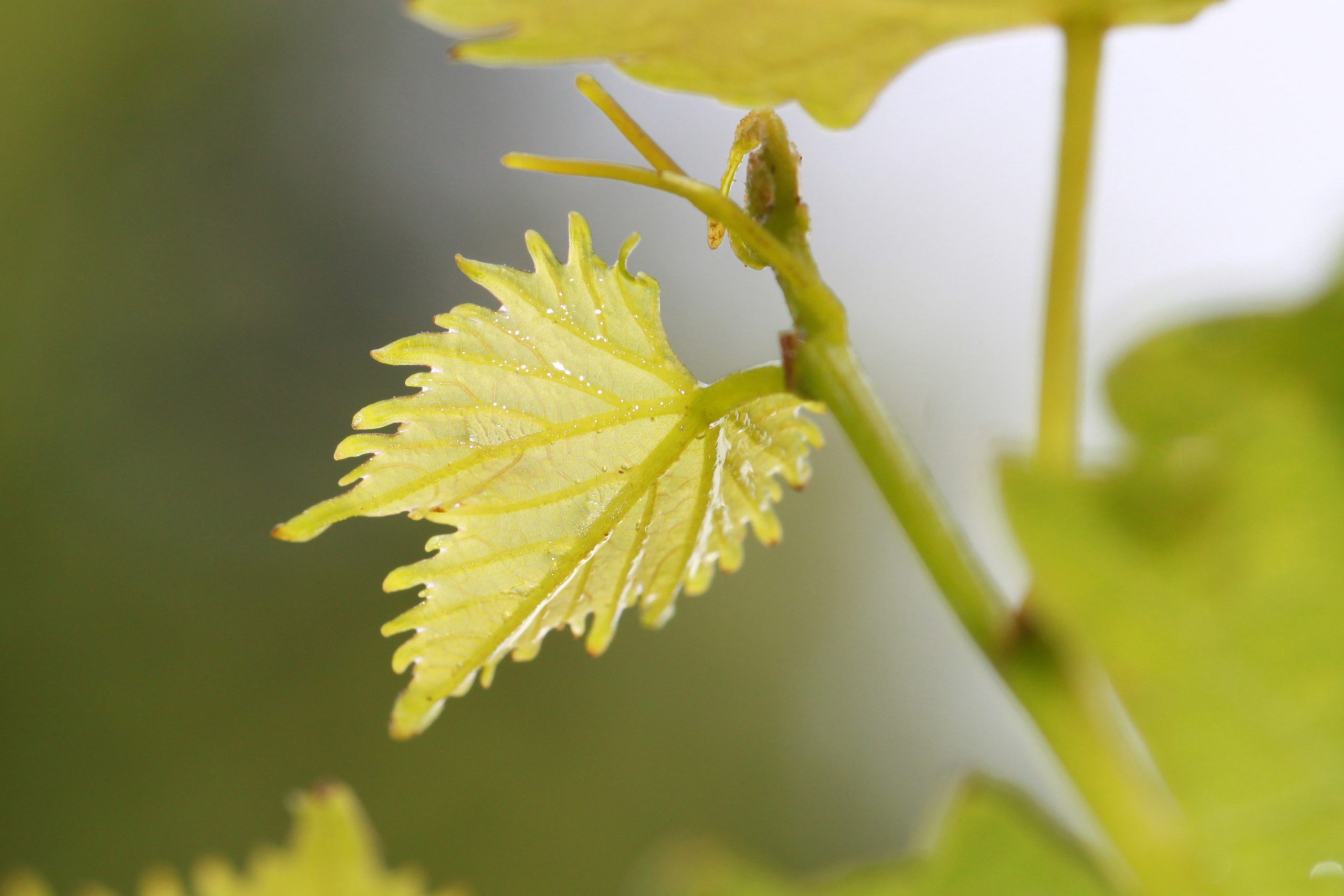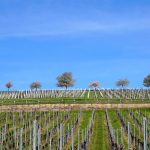As budburst approaches in early spring many regions across the country are prone to damage from frost which can have implications on spring growth, flowering and, if severe, potentially reduce bearing in the current season and the season following, as viticulturist Sam Bowman writes.
Types of Frost
There are two types of frost which affect vineyards in the spring, advective and radiation frosts. An advection frost occurs when a large mass of cold air moves into a vineyard area which is less common in Australia and predominantly manifests in high altitude areas. Radiation frost risk is greatest on clear nights, when the ambient temperature and relative humidity are low and are the majority of frost events experienced in Australian regions. As the sky is colder than the ground in these events, heat is transferred (radiated) to the sky above, reducing the vineyard floor and canopy temperature.
Under calm conditions, the less dense warm air will rise and cold air settles close to the ground and especially into hollows. This leads to stratification, with a layer of warmer air sitting above a layer of cold air closer to the ground. The height of the inversion layer can vary from 5 metres up to hundreds of metres above the ground, but the consistent range is from 10-30 metres. Another characteristic of radiation frosts is katabatic winds, these light winds carry cold air downhill under the force of gravity (AWRI 2020).
Topography and soil type also play a large part in the risk of frost, with low lying areas and sandy soils more prone than high points and clay soils that can retain moisture and exude heat during the events.
Effects of frost in vineyards
Frost damage to plant cells occurs when freezing of the tissue causes the cells to shrink as water is drawn out via osmosis to produce ice crystals. As the tissue is slowly thawed when temperatures increase, the water is drawn back into the cells so the slower the water is accumulated back inside the cell (duration and temperature of the event), the greater the damage due to the moisture deficit inside the cells.
Immediately after a frost event, young shoots will appear wilted and often have blackened margins on young leaves and growing tips, the damage to developing inflorescences may not be apparent immediately but will appear dry and slightly brown around 5-7 days after the event. While additions like foliar Ascophylum nordosum (kelp) will reduce the abiotic stress responses after an event, mitigation during the frost is the key to maintaining yield and spring growth.
Common methods of control
Frost Fans
Frost Fans work by drawing warm air from the inversion layer and mixing it with the cooler air below the cordon to increase the ambient temperature by 1-2 degrees and allow air movement within the canopy. They are well proven to cover an area of around 8 hectares and with automation and efficient engines, pose a significant return on investment in areas with ongoing frost damage. Fans are a great option in areas where consistent water availability may be an issue or where there may be a certain undulation on a vineyard prone to damage.
Sprinkler systems
Sprinklers rely on applying water in consistent rotations from overhead sprinklers to form a thin layer of ice over the developing buds/shoots. As a small amount of heat is released in the conversion from a liquid to solid, the temperature of the buds/shoots is increased slightly above freezing temperature, reducing damage to the developing tissue. The key for a successful sprinkler system in frost prevention is consistency in pressure, application and rotation as any issues with system performance during a frost event can exacerbate the damage. Like frost fans, a proven prevention method when maintained and managed correctly.
Pressure reducing management
Key ways to reduce frost damage in vineyards are maintaining a moist, well-mown midrow and ensuring there is no weed matter undervine. As heat exudes from the soil during frost events, dense ground cover can retain the heat in the soil, further lowering the temperature at the cordon. Varieties that are sensitive to damage, or are naturally early bursting varieties, can be pruned on or just after budburst to delay shoot development. New growth at budburst can withstand -2.2 degrees Celcius, whereas vines at four leaf stage will incur damage at -1.1 degrees Celcius (Gardea 1987). Delayed pruning may not be viable in all regions/vineyard sizes but can be handy for certain pockets that are prone to risk.
What if capital and water are not available?
A common question from growers is what to do in situations where water and surplus capital are not available to install fans or sprinkler systems? The answer could lie in the control of ice nucleating bacteria. Ice nucleating organisms such as Pseudomonas syringae attack plants through frost damage using ice nucleating proteins which have unique hydrophilic/hydrophobic patterns that enhance the nucleation of ice and can increase the instance of frost and the temperature at which damage occurs. Glenn Mcgourty is a retired viticulture and plant science advisor from UC Davis in California and has studied the use of copper sprays in vineyards to reduce the populations of ice nucleating bacteria and in turn, reducing frost risk in vineyards in California.
I caught up with Glenn who now works in politics for the Mendocino County (so much for retirement!) and discussed the results of his trial work on mitigant sprays to reduce frost pressure without the use of fans and sprinkler systems.
SB: What results did you see from applying copper sprays on vineyards for spring frost protection and what was the application frequency required for the best results?
GM: During our five years of trials, we had no frost! The growers wanted me to continue forever… In the lab, we saw dramatically reduced ice nucleating bacteria numbers. In the lab, this resulted in field sourced leaves able to super cool up to 2 degrees C lower, almost as good as wind machines. There was an additive effect if we removed all vegetation from the vineyard floor. So the program requires you to get ahead of the freezing by starting with applications when the shoots have their first fully unfolded leaves and are extended 3-6 inches long. Start earlier if frost is forecast, even as early as felt tipped buds. We often mix stylet oil (light mineral oil) for powdery mildew control; the timing is the same. You need to repeat about every five days during the frost season, but you can extend the sprays up to 10 days if the weather is warm and no frost is in sight. So it tracks well with powdery mildew programs. However, the ice nucleators can still nucleate if freshly dead, so you need to get ahead of the frost forecast as much as you can.
SB: What other tips would you give to growers in a situation where wind machines and sprinkler systems are not an option?
GM: Late pruning, double pruning – leave four bud spurs, let the upper buds start to break before removing them to a two bud spur. This can delay bud break by up to a week which often might buy some time.
Keep the vineyard floor as clean as possible. Graze intensely with sheep pre-bud break (you just happen to have a few million nearby, hopefully!) Mow very close to the ground. In really frosty areas, spray out everything with glyphosate starting four weeks before bud break, even at low rates of 12 ounces per acre; or till everything is clean.
Some work has been completed on the competitive nature of Pseudomonas fluorescens in outcompeting the nucleator Pseudomonas Syringae on the leaf surface but Glenn explained that his trials were quite disappointing, and the area needs some work to determine if the vine leaf in field conditions is a suitable medium for bacterial colonisation. I have heard some anecdotal reports of the success of this method when applied in conjunction with a carbon source (fish/kelp applications) but there needs to be some further trial data collected before this could be a consistent alternative.
It seems counter intuitive, but with a warming climate has come an increased risk and incidence of frost between August and November impacting many agricultural industries in Australia. Prevention, like every other facet of vineyard management is the key to viable yields and reduced losses during the spring frost period.

















